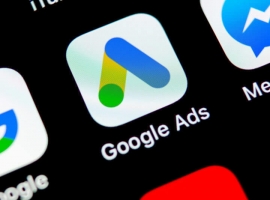It’s not often that marketers get to kick back and relax while customers do their job for them, but when you adopt user-generated content (UGC) as your creative, that’s how it works. Coca Cola’s “Share a Coke” campaign is a famous example where sales rose by more than 2% in the US after people began posting images of personalized Coke bottles on social media. That’s even more impressive when you consider that the boost reversed, at least temporarily, a decade-long decline in sales. And that was just organic user posts — why not take the concept further to paid advertising?
The most common way that marketers use UGC is to collect and curate organically-posted social media or blog content that contains positive brand mentions or images. Brands can manually reach out to social media users and ask to use their content, but there are also a number of platforms for obtaining and deploying UGC, such as Olapic, Candid, and Taggbox. Platforms like these typically have a subscription-based model, and help brands gather product or company mentions on social media so that they can be used in marketing materials.
Whether in combination with brand-generated content or as an alternative, UGC is an incredibly impactful tool. UGC serves as social proof that a product or service is of good quality: people trust experienced consumers more than they trust marketers. Therefore, it comes across as authentic and customer-oriented. UGC platforms can also offer interesting and time-saving features, such as connecting dynamic retargeting feeds so that if a user has viewed a certain product on the brand website, you can show them ads featuring that specific product.
Why do crowdsourced creatives work so well for programmatic display?
UGC is more cost-effective than setting up a photo shoot and reduces the load on in-house marketing teams, while still often resulting in striking visuals that can be engaging. In our experience, these creatives have high engagement rates on social media platforms, which is why they are available on UGC platforms for brands to use in the first place.
Olapic’s Consumer Trust Survey found that user-generated social media influences purchase decisions. (Click to see the full infographic.)
In comparison with brand-generated content, UGC enables advertisers to refresh ad content much more frequently. Brand-generated content has a much slower turnaround due to needing to be professionally shot, requiring both time and money. With UGC, you decrease the chance of overexposure and ad blindness, plus there’s a better chance of achieving better results when there are a lot more creatives to be rotated and tested.
To take an example from our own accounts, a retail client wanted to try something new to drive audiences to their site. We implemented a UGC strategy using a platform, through which our client obtained images of people casually using their products in the real world. Audiences responded incredibly well to these images and were more likely to engage with them. Without using CTAs, these ads had the highest engagement rates: 10x higher than the industry benchmark. However, when it came to conversions, we still found that brand-generated creatives were more effective. Featuring the product clearly and centrally is a key conversion-driver for both UGC and brand-generated creatives.
Crowdsourced content works well across the board, though, for video, we still recommend using professionally-made content. It’s also a good idea to implement pixels to allow for product-specific retargeting and revenue tracking.
Because crowdsourced creatives are so effective at driving viewers to your site, they’re perfectly suited for prospecting, while brand creatives are good for retargeting. For the creatives themselves, UGC that focuses on activities related to the products works well for prospecting, whereas product-focused creatives are better for retargeting. Of course, results differ from one brand to another, so continuously testing brand vs. user-generated content is a must at all stages.
Stepping up your UGC relationships
As a final note, UGC platforms are a good starting point to see what’s best for engagement, but, for some brands, it may be better to manually reach out to social media influencers instead. After working with a UGC platform and seeing the benefits of using influencer content in particular, this client has opted to base their campaigns around selected influencers, with whom they maintain direct relationships. For some companies, this approach may be more cost-effective and fit better with their overall branding strategy.
Given its strong performance for our client, UGC is now being used as a major branding exercise across all of the company’s online activity, and it has boosted performance across these channels, too. For branding and prospecting strategies especially, it’s an exceptional tool for collecting economical creatives that have a proven track record of resonating with audiences. Although finding good content requires marketers and agencies to be proactive, the engagement rates are well worth the effort.
The post Here’s why you should crowdsource your programmatic creatives appeared first on Marketing Land.
Original article source: https://marketingland.com/feed






There are no comments